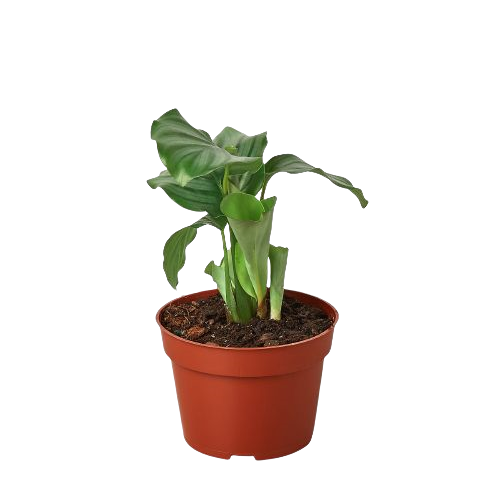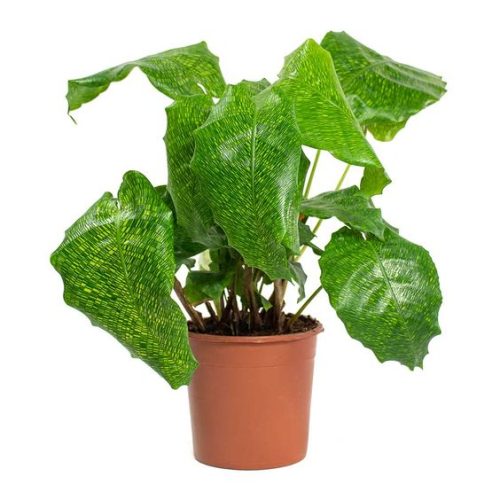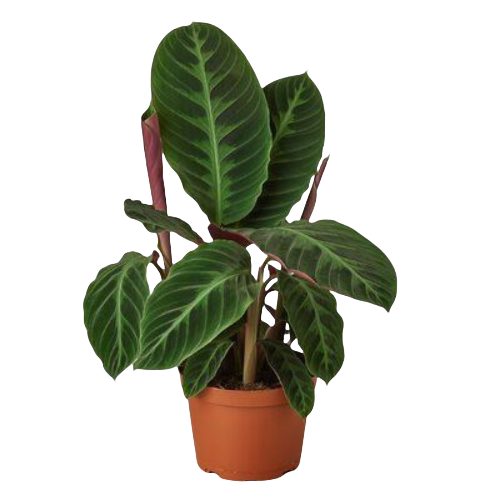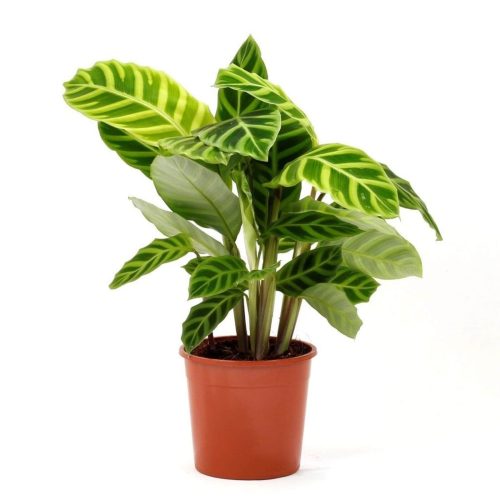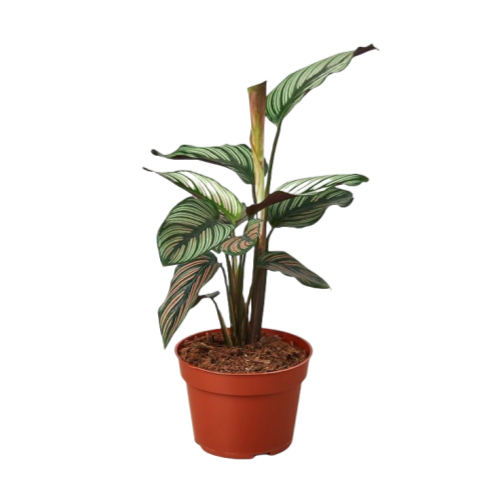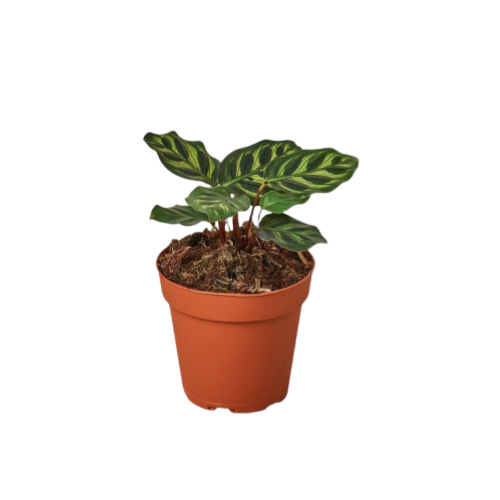Calathea Medallion
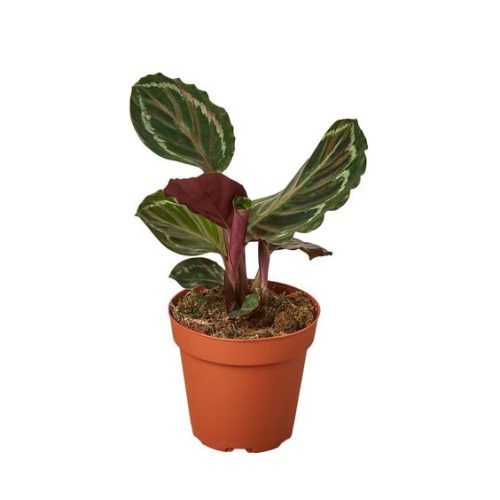
- Botanical Name: Calathea veitchiana 'Medallion'
- Family Name: Marantaceae
- Stems: 2-3 inches
- Temperature: 18°C -29°C
- Other: high temperature,high humidity, avoids direct sunlight.
Overview
Product Description
Calathea Medallion Origin and Care
The Exotic Beauty of the Tropics
Calathea Medallion, originally from Brazil, is native to tropical and subtropical regions. It is a plant that thrives in high temperatures, humidity, and semi-shaded environments. Its ideal growing temperature ranges from 20-30°C, with a daytime optimal temperature of 18-21°C and a nighttime temperature of 16-18°C. To ensure safe wintering, temperatures should not drop below 10°C. In summer, it is crucial to protect it from direct sunlight by placing it in a shaded area. In winter, it should be moved indoors to a sheltered and warmer location to protect it from the cold. The leaf stalks grow directly from the underground stem, and it does not have a main root, so a wide, shallow pot is preferred for potting. A slightly acidic humus soil is most conducive to the growth of the rhizome, leading to a lush plant.
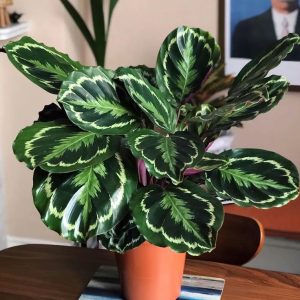
Calathea Medallion
Calathea Medallion’s Light Preferences
It is essential to avoid direct sunlight, as it can scorch the leaves. Instead, it grows better under indirect radiation or diffused light. During summer, direct sunlight can easily burn the leaves, so it is cultivated under a shading net with 75%-80% light transmission in production. If leaf scorching is detected, it should be immediately moved to a place without direct sunlight or to a location with shading facilities or under the shade of a tree, and the scorched leaves should be pruned to prevent the invasion of other pathogenic bacteria through the wounds. At the same time, water and fertilizer management should be strengthened to promote the growth of new leaves and restore its appearance.
Hydration Harmony: Nurturing Calathea Medallion’s Thirst
From March to October each year is the peak growth season for Calathea Medallion, with the most suitable relative humidity being 75%-85%. High air humidity is beneficial for the unfolding of leaves. Especially when new leaves are emerging, if it is too dry, the edges and tips of the new leaves are prone to withering and curling, which can lead to deformities in the future. Wilted leaves cannot recover. Therefore, during the growing season, it is necessary to water frequently and often spray the leaves. In summer, water 3-4 times a day in a timely manner. The best method of watering is to spray the leaves in the morning, water the soil in the afternoon or evening, and irrigate the entire plant at night. However, attention should be paid not to make the soil too sticky or too wet, as this can lead to root rot and diseases. As autumn and winter approach and the growth of Calathea Medallion slows down, the amount of watering should be gradually reduced, depending on weather changes, watering once a day or every 2-3 days. Especially when temperatures are low, the soil should be kept dry to protect it from cold damage.
Resistance and Pests
Calathea Medallion is quite resistant to diseases and pests, but it can still be affected if not managed properly. Common pests include scale insects and spider mites; common diseases include white rot and leaf spot diseases.
Plant Features
Calathea Medallion has an underground rhizome or corm, with single, large leaves. Except for the open leaf sheath at the base, there is a prominent swelling at the connection between the leaf blade and the petiole, called the “pulvinus”. It contains water-storing cells that regulate the direction of the leaves, that is, when the leaves are fully hydrated at night, they stand upright, and during the day when the water is insufficient, the leaves spread out. This is a characteristic of Marantaceae plants. In addition, some Calathea species have a “sleep movement”, where the leaves spread out during the day and fold at night, which is very peculiar.
Landscape and Indoor Application
The color of the leaves is rich and colorful, and it has strong ornamental value. It is mostly a shade-loving plant with strong shade tolerance and strong adaptability. It can be planted in the shade of courtyards and parks or on the roadside. In the South China region, more and more species are being used in garden greening. The planting methods can be used for piece planting, clumping, or arranged with other plants. In the northern regions, it can be cultivated in ornamental greenhouses for garden viewing.
Calathea Medallion: A Versatile Indoor Beauty for Greenery and Arrangements
The Calathea Medallion, admired for its attractive plant shape and vibrant leaf patterns, is a standout indoor foliage plant. Its excellent shade tolerance makes it ideal for various settings, from large hotel lobbies to intimate home spaces. To optimize its growth and appearance, it’s essential to periodically place it in a sunny spot, such as a balcony or windowsill. Additionally, its striking leaf colors and patterns make it premium material for fresh flower arrangements, either as a focal point or a complementary element.





